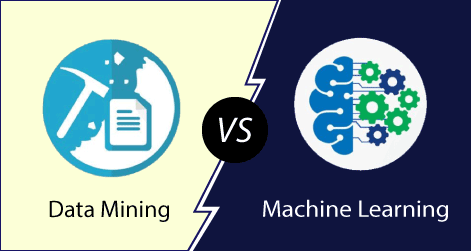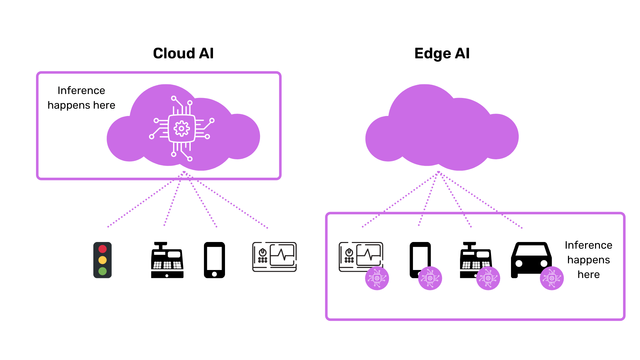
Fake news has become the most prevalent form of slander. Recently, deepfake news was highlighted by the video of Gabon's president giving an address to rivals that was considered fake. The video caused civil unrest in Gabon and is still unknown about the president's health. However, it is likely that there will be more fake news in the future.
Artificial intelligence (AI).
AI providers boast a few examples, including fake AI. One firm, MMC Ventures, in London, has determined that 40 percent of the AI start-ups it has examined do not use the term artificial intelligence in their marketing claims. Banjo was a program which analyzed information manually by human analysts. Utah's lawmaker is not the only one. Fake AI has been exploited by many businesses and governments.

Fake news
The civil liability for platforms that distribute deep fakes is worldwide because of their global dissemination. Defamation (false light), intentional infliction and emotional distress are some of the most serious civil liability claims for deep-fake content. Unfortunately, the platform owner may not be in the country so there may be no recourse for someone who has been hurt by the content. However, there are some measures platforms can take to mitigate the harm caused by deep fakes.
Phishing
Identity fraud is one of the fastest growing forms of financial crime and deepfake technology opens a Pandora's Box for attackers. Deepfake technologies can be used to fool authentication mechanisms because identities are a common variable across endpoints. Phishers can use this technology to steal identities of business leaders. A new threat is emerging: QR code phishing.
Pornography
Many internet users are now more interested in deepfake sex. Its creators have used artificial intelligence (AI), in order to create pornographic content that is based on celebrities and other well-known people. As such, deepfake poin is hugely lucrative. Deepfake video is different from traditional porn. They do not require consent but instead involve the abuse and likeness of persons over the age 18.

Reconstructions and reconstructions of celebrities
DeepFake is an artificial intelligence program that reconstructs celebrities and creates video-based duplicates. The technology involves swapping the faces of the subject and a deep neural network that learns how to reconstruct the image. DeepFake takes the video inputs as inputs. It uses facial landmarks to identify the subject and reconstruct the image using these landmarks.
FAQ
Who is the inventor of AI?
Alan Turing
Turing was born in 1912. His father, a clergyman, was his mother, a nurse. At school, he excelled at mathematics but became depressed after being rejected by Cambridge University. He discovered chess and won several tournaments. He returned to Britain in 1945 and worked at Bletchley Park's secret code-breaking centre Bletchley Park. Here he discovered German codes.
1954 was his death.
John McCarthy
McCarthy was conceived in 1928. Before joining MIT, he studied mathematics at Princeton University. There he developed the LISP programming language. He was credited with creating the foundations for modern AI in 1957.
He died in 2011.
AI: Why do we use it?
Artificial intelligence is an area of computer science that deals with the simulation of intelligent behavior for practical applications such as robotics, natural language processing, game playing, etc.
AI is also known as machine learning. It is the study and application of algorithms to help machines learn, even if they are not programmed.
There are two main reasons why AI is used:
-
To make our lives easier.
-
To do things better than we could ever do ourselves.
A good example of this would be self-driving cars. AI can take the place of a driver.
How will governments regulate AI?
While governments are already responsible for AI regulation, they must do so better. They must make it clear that citizens can control the way their data is used. Aim to make sure that AI isn't used in unethical ways by companies.
They should also make sure we aren't creating an unfair playing ground between different types businesses. A small business owner might want to use AI in order to manage their business. However, they should not have to restrict other large businesses.
What is the current state of the AI sector?
The AI industry is growing at a remarkable rate. The internet will connect to over 50 billion devices by 2020 according to some estimates. This means that everyone will be able to use AI technology on their phones, tablets, or laptops.
This will also mean that businesses will need to adapt to this shift in order to stay competitive. If they don’t, they run the risk of losing customers and clients to companies who do.
It is up to you to decide what type of business model you would use in order take advantage of these potential opportunities. What if people uploaded their data to a platform and were able to connect with other users? Or perhaps you would offer services such as image recognition or voice recognition?
Whatever you decide to do, make sure that you think carefully about how you could position yourself against your competitors. While you won't always win the game, it is possible to win big if your strategy is sound and you keep innovating.
Statistics
- In 2019, AI adoption among large companies increased by 47% compared to 2018, according to the latest Artificial IntelligenceIndex report. (marsner.com)
- According to the company's website, more than 800 financial firms use AlphaSense, including some Fortune 500 corporations. (builtin.com)
- More than 70 percent of users claim they book trips on their phones, review travel tips, and research local landmarks and restaurants. (builtin.com)
- Additionally, keeping in mind the current crisis, the AI is designed in a manner where it reduces the carbon footprint by 20-40%. (analyticsinsight.net)
- A 2021 Pew Research survey revealed that 37 percent of respondents who are more concerned than excited about AI had concerns including job loss, privacy, and AI's potential to “surpass human skills.” (builtin.com)
External Links
How To
How to set up Google Home
Google Home is an artificial intelligence-powered digital assistant. It uses natural language processing and sophisticated algorithms to answer your questions. Google Assistant allows you to do everything, from searching the internet to setting timers to creating reminders. These reminders will then be sent directly to your smartphone.
Google Home integrates seamlessly with Android phones and iPhones, allowing you to interact with your Google Account through your mobile device. Connecting an iPhone or iPad to Google Home over WiFi will allow you to take advantage features such as Apple Pay, Siri Shortcuts, third-party applications, and other Google Home features.
Google Home, like all Google products, comes with many useful features. It will also learn your routines, and it will remember what to do. So when you wake up in the morning, you don't need to retell how to turn on your lights, adjust the temperature, or stream music. Instead, you can say "Hey Google" to let it know what your needs are.
These steps will help you set up Google Home.
-
Turn on Google Home.
-
Press and hold the Action button on top of your Google Home.
-
The Setup Wizard appears.
-
Select Continue
-
Enter your email adress and password.
-
Register Now
-
Your Google Home is now ready to be